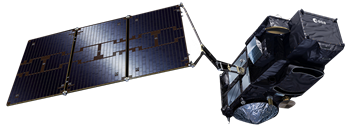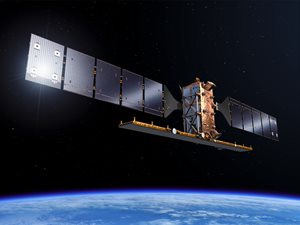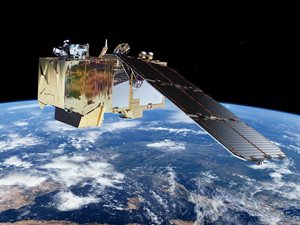Copernicus programme
 Copernicus is a European system for monitoring the Earth.
Copernicus is a European system for monitoring the Earth.
Copernicus consists of a complex set of systems which collect data from multiple sources: earth observation satellites and in situ sensors such as ground stations, airborne and sea-borne sensors. It processes these data and provides users with reliable and up-to-date information through a set of services related to environmental and security issues. This provides critical information to support a wide range of applications, including environment protection, management of urban areas, regional and local planning, agriculture, forestry, fisheries, health, transport, climate change, sustainable development, civil protection and tourism.
The new suite of Sentinel satellites, which were developed by the European Space Agency, forms the heart of the Copernicus programme – the largest global environmental monitoring initiative ever conceived. The Sentinels carry a vast range of sensors to deliver a stream of complementary imagery and data for monitoring our land, ice, oceans and atmosphere and provide a greater understanding of large-scale global dynamics.
Sentinels 1A, 1B, 2A and the recently launched 3A will be utilised in the project. There has already been some spectacular imagery obtained from these satellites but in situ observations are needed from projects like AMT4SentinelFRM to validate and prove how good the data are. The project will focus on validating sea surface temperature and ocean colour radiometry data which can be used for management of the marine ecosystem, understanding the role of the ocean ecosystem in climate change, aquaculture, fisheries, coastal zone water quality, mapping and monitoring harmful algal blooms, and climate monitoring.
The main users of Copernicus services are policymakers and public authorities who need the information to develop environmental legislation and policies and allow them to be administered with confidence. Critical decisions can then be made in the event of an emergency, such as a natural disaster or a humanitarian crisis.
The Copernicus programme is coordinated and managed by the European Commission. The development of the observation infrastructure is performed under the aegis of the European Space Agency for the space component and of the European Environment Agency and the Member States for the in situ component.



Artist views of the Sentinel-1 (left), Sentinel-2 (middle) and Sentinel-3 satellites (right).
Key facts
- Ocean Colour (OC) and Sea Surface Temperature (SST) are fundamental parameters used to monitor and manage the marine ecosystem for aquaculture, fisheries, water quality, mapping and monitoring harmful algal blooms as well as the ocean’s response to climate change.
- Copernicus satellites Sentinel-2A and Sentinel-3A carry state-of-the-art instruments for the measurement of OC and SST providing the most advanced means of measuring these parameters globally, over land, coast and ocean, to date.
- To ensure the reliability and accuracy of the information these satellites provide we need to compare the data to high quality in-situ measurements of OC and SST.
- AMT4SentinelFRM brings together Copernicus and the long-running AMT research cruise programme to compare the satellite derived data with highly accurate in-situ measurements of OC and SST levels. Samples will be taken over a range of open ocean and coastal environments and compared to the data collected by satellites for the same area at the same time period in order to provide fundamental validation of the sentinel satellites.
- The knowledge and findings attained through AMT4SentinelFRM will be shared with the international science community at an open invitation workshop and through publications and dissemination activities. Recommendations for future research will be formulated and shared with the European Space Agency.